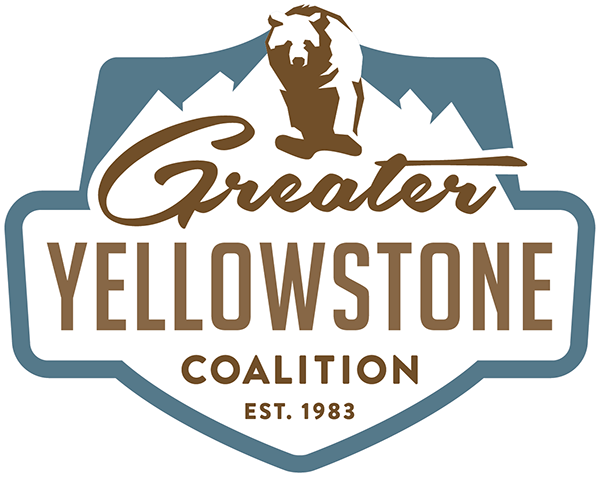Grizzly Bear Decision Protects Bears While Providing a Path for Durable Recovery and More Tools for Communities
Greater Yellowstone grizzly bears represent the wild, resilient nature of this special ecosystem. Thanks to coordinated conservation efforts over the last half century, grizzly bears living in the Greater Yellowstone and Northern Continental Divide ecosystems have made a remarkable comeback under Endangered Species Act protections.
Grizzly bears living in the lower 48 states were listed as a Threatened Species under the Endangered Species Act in 1975, when only 130 bears were living in and around Yellowstone. Today, between 950 and 1,000 grizzly bears roam Greater Yellowstone.
The U.S. Fish and Wildlife Service’s Jan. 8, 2025 decision to keep grizzly populations protected under the Act and proposed next steps highlights the unique needs of grizzlies and charts a durable path for improved co-management with states so that communities have the best available tools for living alongside bears. This decision recognizes the success of decades of investments and community-based conservation efforts, and the need for continued collaboration.
Our goal is to ensure that a future transition to state management maintains and builds upon this conservation success long into the future.
“Grizzly bears on the brink of extinction were one of the main drivers behind Greater Yellowstone Coalition’s founding over 40 years ago. Thankfully, grizzlies are no longer on the brink, but the decision to maintain protections for bears demonstrates more work remains,” said GYC Executive Director Scott Christensen. “Our goal is to ensure that any future transition to state management maintains and builds upon this conservation success long into the future.”
A grizzly bear in a Yellowstone National Park Forest. Grizzly bears across the Greater Yellowstone and Northern Continental Divide ecosystems have made a remarkable comeback under Endangered Species Act protections. (Photo NPS/A. Falgoust)
Work remains to ensure any transition to full state management provides adequate support for grizzly bears and the people who live alongside them. The Greater Yellowstone Coalition (GYC) remains committed to ensuring grizzlies have sturdy supports in place to thrive long into the future.
Looking ahead, GYC will continue to promote policies and projects that support grizzlies and the people who live alongside them. This includes ensuring effective plans and guardrails are in place to support a successful and lasting transition to state management.
This will require federal and state assurances for population stability and long-term monitoring, protection of core habitat, commitments to conflict prevention, and plans for promoting continued expansion and presence in habitat that links Greater Yellowstone and the Northern Continental Divide ecosystems to one another and other recovery areas.
Many federal, state, Tribal, and local entities have a role in grizzly bear management. GYC is working to build consensus around the framework of management policies and commitments that we believe will support healthy grizzly populations across the Northern Rockies.
“While living with grizzly bears isn’t always easy, we know that management policies driven by wildlife experts, not politicians, can create the conditions that allow people and bears to thrive on shared landscapes,” Christensen said. “The announcement acknowledges the challenges grizzly bears still face, and at the same time provides an opportunity to achieve meaningful recovery while employing more tools for people living alongside bears.”
There is more work to be done to ensure this framework includes everything necessary to sustain the conservation success story of Greater Yellowstone’s grizzlies.
Currently, federal, state, and Tribal entities need to resolve the following issues to ensure a successful transition to state management:
Improve state laws, rules, and plans that impact the ability of the states to sustainably manage grizzly bear mortality. Current plans and regulations could be strengthened to guarantee stable populations and are inadequate for supporting continued range expansion through critical linkage areas between populations.
Strengthen interagency agreements for population and habitat management. Current post-delisting conservation strategies do not meaningfully address actions to support grizzly bear presence in areas that link populations.
Address uncertainties around the likely impacts of increasing visitation and recreational pressure in Greater Yellowstone, which have the potential to threaten long-term grizzly conservation.
Commit additional financial resources to community-based conflict prevention programs, population monitoring, and long-term management needs. Managing grizzly bears is expensive, a loss of federal and state funding could pose a risk to supporting communities and sustaining healthy grizzly populations over the long-term.
Create safeguards against political meddling in grizzly bear conservation and management, which can undermine the plans and interagency agreements intended to ensure a lasting and successful transition to state management.
A grizzly sow and her adult cubs move across the landscape in Grand Teton National Park. GYC will continue to promote policies and projects that support grizzlies and the people who live alongside them. (Photo NPS/Adams)
If you’re interested in learning more about the past, present, and future of grizzly bear conservation and management in the Greater Yellowstone Ecosystem, head over to our podcast for our newest episode.
GYC has been at the forefront of grizzly bear conservation for more than 40 years—and our work will continue. Living with grizzly bears isn’t always easy, but we believe people and bears can thrive on shared landscapes.
We implement on-the-ground projects, including the placement of bear-resistant trash cans and storage containers, range riding, carcass management, and bear conflict prevention education, to keep people safe, bears wild, and livelihoods intact.
Now is the time for us to continue working together and support a bright future for grizzlies.
Thank you for caring about the Greater Yellowstone Ecosystem and its iconic grizzly inhabitants.
—Matt Cuzzocreo, Senior Wildlife Conservation Associate (Lander, Wyoming)



